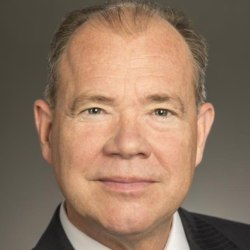State Budget Could Be Capped by “Gann Limit,” Preventing New Taxes
Editor’s Note: For a summary of how state legislators may be prevented by law from increasing taxes any further, this article by Jon Coupal is as good as any. In a nutshell, Prop. 4 (the “Gann Limit”), passed in 1979, then modified by Prop. 111, passed in 1990, limits increases in state and local spending based on a complex formula that takes into account inflation, population growth, and the change in per capita income. This year, the Governor’s budget excludes $22 billion in school spending from the current Gann limit, whereas the report from the Legislative Analysts Office maintains that it should be included. If the LAO is right, than proposed state spending for 2017-2018 is already within $2.8 billion of the Gann limit. This would mean enactment of any additional taxes would put spending over the Gann Limit, inviting lawsuits that could stop those new taxes in their tracks.
Consider this argument from Sacramento politicians: California’s roads, freeways and bridges are crumbling. Our spending on transportation is so seriously inadequate that a gas tax increase and other taxes are desperately needed to save California from ruin.
If this sounds like the shrill arguments we are currently hearing to support an increase in California’s gas tax by another 12 cents a gallon and a hike in the car tax by nearly $40, you’re only half right. Those with long memories will recall that these were the identical arguments made in 1990 by Gov. George Deukmejian and transportation interests urging the passage of Proposition 111, a 9 cents-a-gallon tax increase combined with a 55 percent increase in truck weight fees.
Demonstrating that not much has changed in a quarter-century, promoters of Prop. 111 trotted out long lists of projects that would be completed with the billions of dollars in new revenue. Advertising focused on the benefits of Proposition 111, without ever mentioning taxes.
However, those behind the tax increase realized that, if the measure passed, they would not be able to spend the new revenue because it would exceed the Gann Limit (also known as Proposition 4) that was designed to impose discipline on spending and which was overwhelmingly approved by voters in a special election in 1979. They decided the Gann Limit had to be jettisoned.
The brainchild of Proposition 13 coauthor Paul Gann, Prop. 4 limited increases in state and local spending based on a formula that considered inflation and population growth. Ironically, the measure was endorsed by then Gov. Jerry Brown. And horror of horrors, it also required revenue that exceeded the appropriations limit be returned to taxpayers, which occurred only once, in 1987. That “waste” of taxpayer dollars — giving it back to the people who earned it — engendered resentment by education interests as well as many politicians. For example, then Senate leader David Roberti made clear that, when it comes to taxpayer dollars, if you’ve got it, spend it.
Obviously, to enjoy the proceeds of the new tax, transportation interests needed to find a way to drop the Gann Limit down a deep well and screw on a lid. Their solution was to bury within Prop. 111 a new, higher appropriations limit that, among other things, exchanged the cost-of-living factor with the growth in per-capita personal income, a much more generous calculation. So when Prop. 111 passed, because of these changes, the Gann Limit was no longer considered a serious restraint on state or local government spending.
So last week, when the state Legislative Analyst’s Office dropped a dime on Gov. Brown’s budget, revealing that despite some clever accounting tricks, its extravagant spending violates even the revised Gann Limit, political insiders were shocked and so were taxpayers.
The political class was shocked because they thought they had eliminated the hated Gann Limit once and for all. Taxpayers, too, were surprised because it was generally believed that Prop. 111 had expanded spending limits to such an extent that they no longer provided any meaningful restraint. This just goes to show that underestimating the ability of Sacramento politicians to spend money is a mistake. Give them an unlimited budget and they will find a way to exceed it.
So now taxpayers are staring down the barrel of huge spending increases as well as an all-out effort to increase transportation taxes.
Even though the Prop. 111 tax hikes were permanent, and promoters promised it would solve our transportation infrastructure problems, the Legislature was never shy about diverting the revenue to other general fund purposes. Thirty years after the passage of Proposition 111, legislators are still diverting $1.1 billion in truck weight fees from paying for road repairs. How can we take seriously their request for higher gas and car taxes (already tops in the nation) when they still won’t implement these common-sense reforms?
Now that the failure to properly spend the money to maintain our roads and highways has caught up with the political ruling class, they are returning to their desperate cries for higher taxes. But if the presumed irrelevant Gann Limit actually has teeth, perhaps that will spur a discussion about out-of-control spending in California.
Jon Coupal is president of the Howard Jarvis Taxpayers Association.
